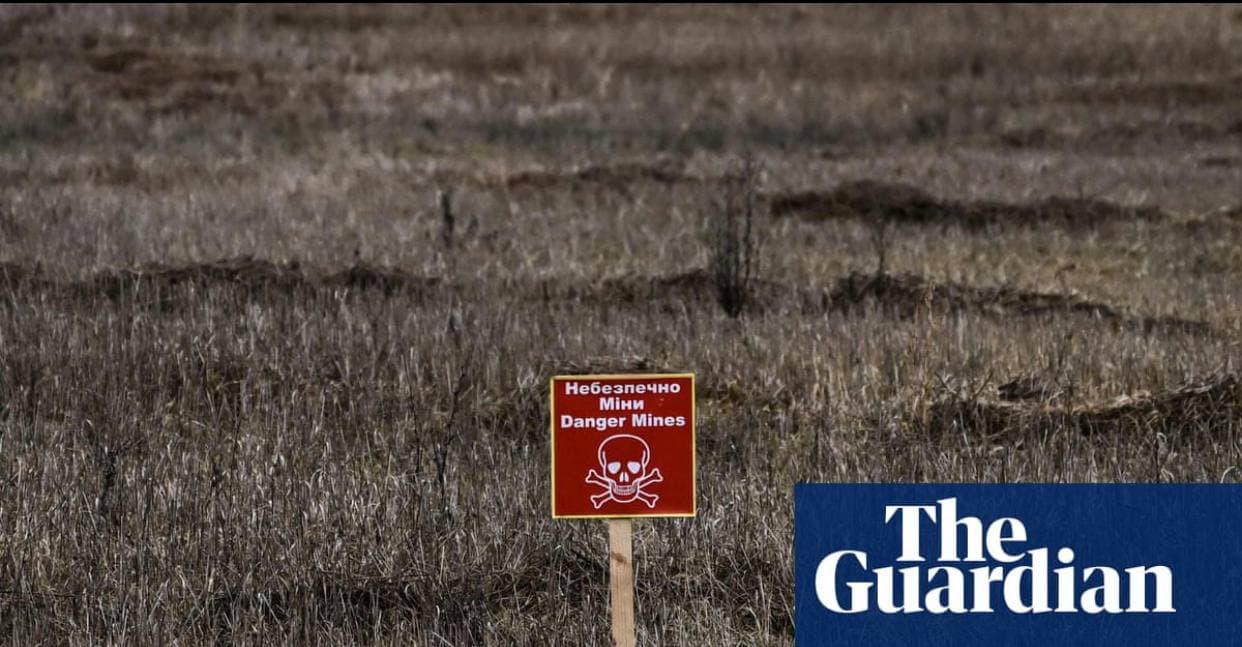
War means ‘breadbasket of the world’ faces unprecedented difficulty sowing, harvesting and exporting wheat and other produce.
The Russian invasion of Ukraine is leading to a dramatic decline in crops planted by farmers in the country this spring, with fears for domestic and international food security.
Known for its fertile soils, Ukraine is a major exporter of wheat, barley, sunflower and maize, in particular to north Africa.
However, farmers and analysts have told the Guardian that planting, harvest and export have all been disrupted by a lack of fertiliser, low or no fuel supplies for tractors, closure of ports and military activity.
At least one-third of the land normally used for spring crops such as maize and sunflower is likely to go unplanted. Furthermore, one-third of the normal wheat harvest from the crop planted last autumn could be lost.
A small amount of wheat held in storage is reportedly being exported by rail and road via Poland and Romania, but this is a “tiny fraction” of what is normally exported via the Black Sea ports of Odesa and Mykolaiv before the invasion, said analysts.
Ukrainian officials have said other export routes via the Danube River, railways and road are restricted by inadequate facilities and, in the case of railway, the difference in track and stock width between Europe and Ukraine.
“I think we’re looking at potentially several months [after a cessation of the war] before export levels could be returned to normal,” said Mike Lee, who runs the Black Sea Crop Forecasts service. He said ships may struggle to get insurance cover and permission to re-enter Black Sea ports, with mines also needing to be cleared.
Global cereal prices rose to a new all-time high in February due to the disruption to exports. The World Food Programme, the UN agency that provides emergency supplies to countries in conflict or experiencing natural disasters such as famines, said this week that the higher cost of food has meant it is already cutting rations.
While most of Ukraine’s wheat is planted in autumn, other crops, including maize and sunflower, are planted in spring, over the coming weeks.
Serhiy Ivaschuk operates a mixed dairy and arable farm with just under 7,000 hectares (17,300 acres) in the west of Ukraine in the Khmelnytskyi region, 350kms south-west of Kyiv. He said there were no hostilities in his area, but planting had been slowed this year as he had lost workers and farm vehicles to the Ukrainian military.
“Our own agricultural inputs are more or less sufficient for now and the diesel stocks should be enough for the sowing. We may run short of seeds, fertilisers and crop protection products.
“Before the war started, we had made several pre-payments for supplies from our credit lines. However, the logistics and supply chains are broken now, so our suppliers can’t provide us with the inputs,” he said.
Ivaschuk said he had corn and wheat in storage ready to sell but was unable to export it due to logistical restrictions on using the railway, with his crops normally sent through the Polish border by rail.
The restrictions on selling wheat held in storage are not just a threat to global food security, said Andrii Dykun, chair of the Ukrainian Agri Council, which represents about 1,000 farmers across the country.
“In a few months there will be a new harvest, so where will we store it? Farmers also need money for fuel and fertiliser,” he said, adding that the price of diesel had doubled since the war started.
Ukraine gets most of its diesel supplies from Belarus and Russia, said Dykun, but was now trying to find other sources from Europe.
In western Ukraine, another farmer who co-manages a 2,000-hectare (4,940-acre) farm near the city of Lviv, said he had started planting peas and some wheat but that they currently intended to sow “around two-thirds of what we planned a month ago”.
“Cashflow and inputs are very difficult currently, with suppliers demanding prepayment for supply compared to credit last season,” he said, adding that farms in the east were likely to be sowing even less due to more difficulties with logistics, military occupation and mined areas.
In the north and east of Ukraine, many farmers had tanks, military machinery and even missiles on their land. Some have described Russian soldiers occupying their farms and taking away food and equipment.
“They are scared to go into the fields,” said Dykun, adding that “it looks like they [the Russian military] want to destroy our agricultural industry”.
Tuesday, 5 April 2022